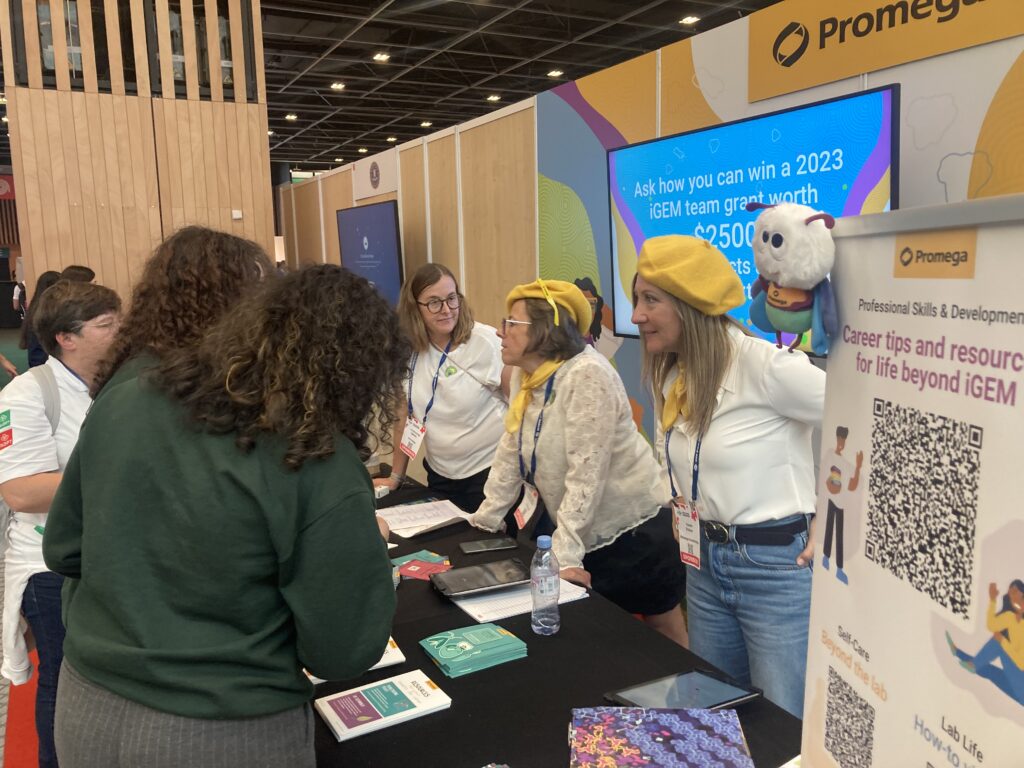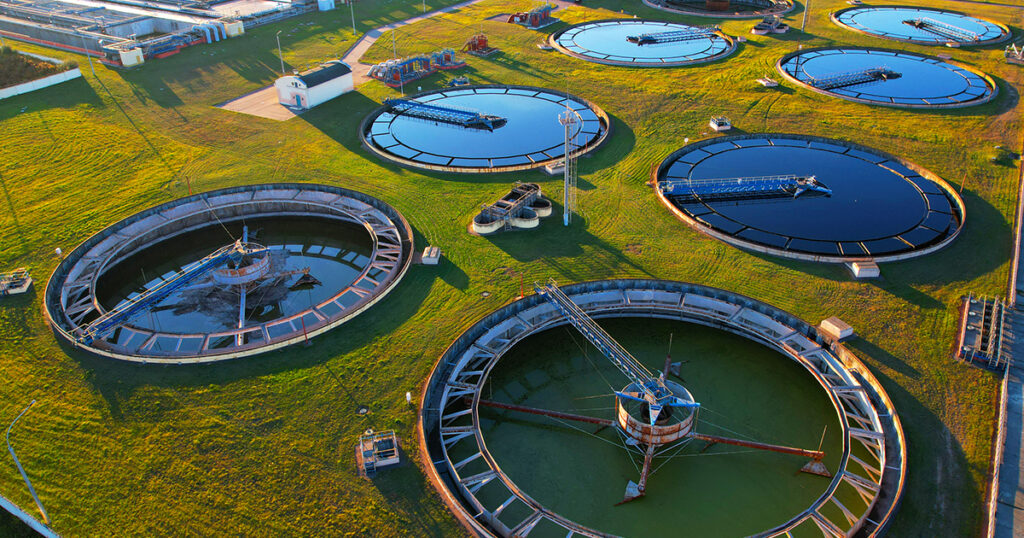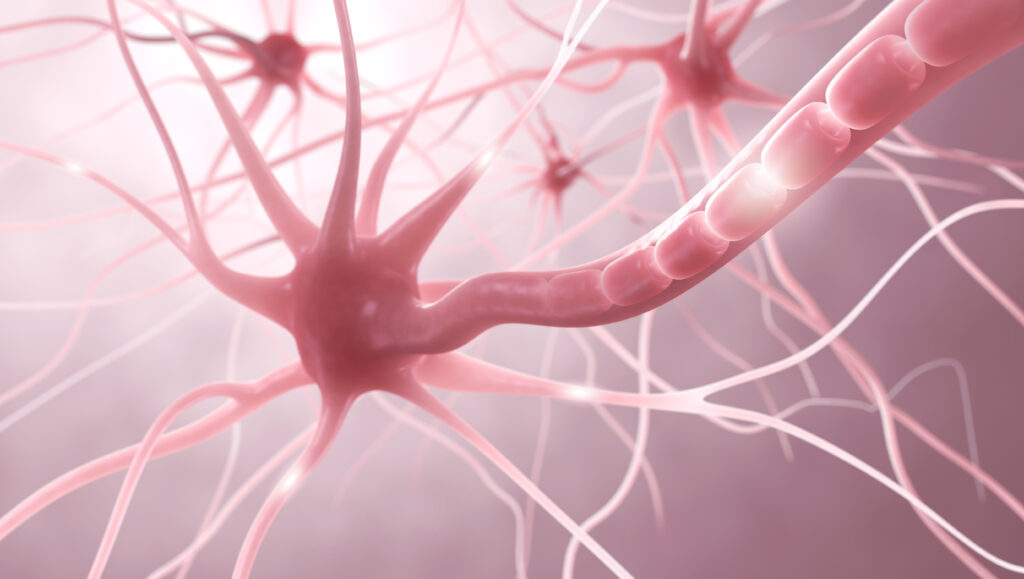In 2022, our bloggers wrote on topics ranging from monkeypox outbreaks to cultured meat in biotech labs to preventing the next pandemic. Our top three most-viewed blog posts this year have the commonality of Promega products helping to advance important research in different fields and push science a step forward in the world. Take a look at Promega’s top three most-viewed blog posts of 2022.
Continue reading “Our Top Three Most-Viewed Blog Posts of 2022”General
Recapping the 2022 iGEM Grand Jamboree
On October 26, hundreds of young scientists made their way through Paris to convene at the Paris Expo Porte de Versailles for the world’s largest synthetic biology competition. The iGEM Grand Jamboree showcases student projects from around the world that tackle real-world challenges such as nutrition, diagnostics and climate change.
Each year, ten Promega iGEM Grant winners receive $2,500 in free Promega products to support their research. Many Promega branch offices also provide support to teams within their region. In total, 36 iGEM teams were supported by Promega during the 2022 competition.

Six representatives from Promega Madison, France and Germany attended the Jamboree. We met so many incredible scientists and had countless conversations about the exciting future of synthetic biology. At the Closing Ceremonies, we were thrilled to see many of our sponsored teams take home gold medals, trophies, and even the coveted BioBrick Trophy.
Continue reading “Recapping the 2022 iGEM Grand Jamboree”Disease Dynamics and Wastewater Surveillance in the Las Vegas Desert

Wastewater surveillance, or wastewater-based epidemiology (WBE), is a rapidly growing field that has recently proved effective in tracking the spread of SARS-CoV-2 in communities around the world. WBE refers to the process of analyzing the wastewater output from a population to detect the presence of certain compounds or pathogens. Though its use became widespread during the pandemic, many see its ongoing utility in monitoring other infectious diseases as well, including polio, influenza and monkeypox, among others.
One such application of this tool is taking place at the University of Nevada-Las Vegas (UNLV), where Edwin Oh, Ph.D., is leading a WBE study to keep tabs on disease dynamics in southern Nevada, an area with a population of roughly 2.4 million.
“We do wastewater surveillance for both urban and rural sites, in terms of wastewater treatment plants. We process those samples and we’re able to assess how much virus might be present,” said Oh, who is an associate professor at the Nevada Institute of Personalized Medicine (NIPM) in the UNLV School of Medicine. “We also run wastewater surveillance for specific facilities at the building level, including dormitories, elementary schools and shelters, as well as airports and hotels.”
Continue reading “Disease Dynamics and Wastewater Surveillance in the Las Vegas Desert”Made Just for You: Promega Custom Reagents
At promega.com you’ll find reagents designed for use in your life science research, whether you need to isolate DNA or RNA, determine cell viability or signaling, gain metabolic assay insights, run a reporter bioassay or isolate nucleic acid from wastewater.
Did you know that we also create unique custom reagents? Whether you’re looking for an extra-large size of a compound, a unique type of packaging or package labeling, or a reagent or assay target that’s unique to your project, Promega custom reagents can help.
What Types of Custom Reagents Are Available?
We currently supply custom-made reagents in the areas of amplification, bioluminescence, nucleic acid purification, protein analysis and protein purification. See this Promega Custom Products and Technologies web page for details.
Need a unique master mix for your amplification reaction? This short video provides examples of how we can customize an amplification master mix.
Unearthing History: How Forensic Analysis of a Racial Massacre is Bringing Closure to a Community 100 Years Later
This article was originally published in the May 2022 issue of the ISHI Report.
On October 19, 2020, in a corner of what was once the African American section of the Potter’s Field in Tulsa’s Oaklawn Cemetery, a backhoe begins scraping away layer after layer of red Oklahoma earth. Workers in high-visibility vests and orange hard hats prepare to join the excavation. DeNeen Brown, a reporter with the Washington Post, looks on, bearing witness to a site that could be one of the final, unmarked resting places for victims of a massacre that happened 100 years in the past.

Neanderthal DNA and Modern Humans: Svante Pääbo Receives the 2022 Nobel Prize in Physiology or Medicine
What makes humans “human”?

On October 3, 2022, the Nobel Assembly at Karolinska Institutet announced the 2022 Nobel Prize in Physiology or Medicine had been awarded to Svante Pääbo, director of the Department of Genetics at the Max Planck Institute for Evolutionary Anthropology in Leipzig, Germany. The Assembly cited his “discoveries concerning the genomes of extinct hominins and human evolution”. They mentioned the highlight of his research: the seemingly impossible task, at the time, of sequencing the Neanderthal genome. The discoveries that followed from this sequencing project continue to redefine our understanding of modern human origins.
The award showcases the technological advancements made in the analysis of ancient DNA. However, Pääbo’s research had an inauspicious beginning. In 1985, he published the results of his early work, cloning and sequencing DNA fragments from a 2,400-year-old Egyptian mummy (1). Unfortunately, later analysis revealed that the samples could have been contaminated by the researchers’ own DNA (2).
Continue reading “Neanderthal DNA and Modern Humans: Svante Pääbo Receives the 2022 Nobel Prize in Physiology or Medicine”What Have You Done for Your Emotional Wellness, This Month?

Most of us are familiar with the term wellness. We associate wellness with lifestyle practices such as exercising, having a balanced diet, and taking care of our bodies. As significant as these practices are to live long, healthy lives, there’s a critical component of wellness that is often overlooked, emotional wellness.
The National Center for Emotional Wellness defines emotional wellness as, “An awareness, understanding and acceptance of our feelings, and our ability to effectively manage through challenges and change.” Maintaining a healthy emotional balance helps us form better relationships with peers, make healthier lifestyle choices, and empower people through life’s unexpected changes. October, Emotional Wellness Month, is the perfect reminder to take time out for your brain and make steps towards effectively managing your emotions.
Continue reading “What Have You Done for Your Emotional Wellness, This Month? “Circulating Nucleic Acids in Human Biofluids and Liquid Biopsy Research

Several different types of nucleic acids can be found circulating in human biofluids. Fragmented DNA and RNA are now routinely purified from plasma and other bodily fluids. These types of nucleic acids need to be purified from a cell-free fraction of the biofluids to ensure that the isolated nucleic acids are truly circulating and not from intact cells. In this blog post, we will learn a bit more about circulating nucleic acids (CNA) and how they can be used as biomarkers in research.
Continue reading “Circulating Nucleic Acids in Human Biofluids and Liquid Biopsy Research”“Forever” Chemicals: Forever No More
If you were tasked with destroying something called “forever chemicals”, chances are you’d be leaning towards rather harsh methods. Incineration would probably be on the table.
These so-called “forever chemicals”, or per- and polyfluoroalkyl substances (PFAS), are a family of organic compounds where fluoride replaces hydrogens atoms on carbon chains. They are very water and oil repellent, which makes them ideal for use in non-stick cookware, stain-proof fabrics and fire-suppressing foams. Recent studies, however, show that exposure to PFAS is linked to a range of health issues—from increased cholesterol levels to some cancers. Even levels of PFAS present in drinking water in as low as parts per billion levels can pose risks to human health. These risks are exacerbated by the tendency for PFAS to bioaccumulate, or become concentrated in the tissues of humans and animals.
Methods do exist to filter out PFAS from water. But what do you do when it’s time to replace those filters? Simply throwing out PFAS-contaminated equipment just moves the problem to a landfill.

Instead, these “forever chemicals” need to be destroyed. Most existing strategies for breaking down PFAS use harsh conditions, such as incinerating PFAS residues in furnaces or oxidizing them in supercritical water—water that is at more than 37°C and 200atm of pressure. Now, scientists reporting in Science have discovered that such extreme methods may not be needed to destroy “forever chemicals” (1).
Continue reading ““Forever” Chemicals: Forever No More”Keeping Cool When It Hurts: An Engineered Alternative to Pharmacological Pain Management
Pain management, particularly long-term pain management, is a difficult problem. Opioids are effective at reducing pain, but they are addictive and carry with them the significant costs of addiction and overdose that affect not only the individual but society as well.

Recently, work presented in Science by Reeder and colleagues proposes an engineering solution to pain management: miniature, implantable devices that can deliver localized and reversible neural blocking to reduce pain. While such devices could deliver any kind of stimulus ranging from electrical to pharmacological, the researchers developed a device that temporarily blocks neural signals by cooling.
Continue reading “Keeping Cool When It Hurts: An Engineered Alternative to Pharmacological Pain Management”